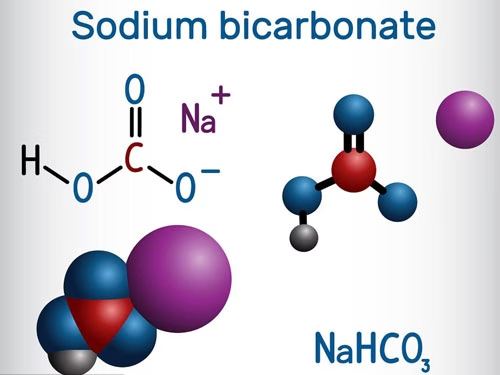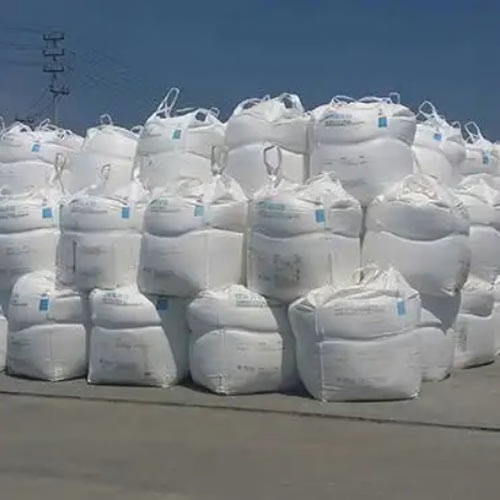I. Introduction
In our daily lives, sodium bicarbonate plays an ubiquitous yet often overlooked role. It quietly infiltrates various aspects of our existence, from the kitchen where delicious baked goods come to life, to the medicine cabinet that holds remedies for our ailments, and even extends its reach to the industrial realm, facilitating essential manufacturing processes. This seemingly ordinary white powder, with its remarkable versatility, has become an indispensable part of modern society. To know the properties and usage, please read article:
“Unveiling the Wonders of Sodium Bicarbonate”.

But what exactly is the common name that we casually use to refer to this chemical compound? In this article, we will embark on a journey to uncover the widely recognized alias of sodium bicarbonate and explore the reasons behind its prevalence in our vernacular.
II. Is Sodium Bicarbonate Baking Soda
The answer is YES. In fact, baking soda is the most widely known common name of sodium bicarbonate.
The name “baking soda” has its roots deeply embedded in the history of baking. As early as the 18th century, bakers began to notice that adding a certain white powder to their dough led to a remarkable transformation. This powder, which we now know as sodium bicarbonate, caused the dough to rise and become lighter and fluffier.
The term “baking” was a direct reference to its primary application in the baking process, where it played a crucial role in creating the airy textures we associate with freshly baked bread, cakes, and pastries.

The word “soda” harkens back to its chemical nature, as it was initially derived from naturally occurring soda ash, which contains sodium carbonate. Over time, as the understanding of chemistry advanced and the specific compound sodium bicarbonate was isolated and identified, the name “baking soda” stuck, becoming a household term synonymous with the art of baking.
III. Other Common Names and Their Meanings
A. Sodium Hydrogen Carbonate
“Sodium hydrogen carbonate” is a more chemically descriptive name. The “sodium” indicates the presence of the sodium cation (Na⁺), which is a crucial part of the compound’s ionic structure. The “hydrogen carbonate” part refers to the HCO3- anion. This anion contains a hydrogen atom bonded to a carbonate group (CO32-), with the hydrogen conferring acidic properties to the otherwise basic carbonate ion. In the context of chemical nomenclature, this name follows the standard convention for naming acid salts. Compounds like sodium bisulfate (NaHSO4) and potassium hydrogen phosphate (KH2PO4) share a similar naming pattern, where the hydrogen attached to the polyatomic anion is emphasized. It is a more formal and systematic name compared to some of the other common names and is often used in scientific literature and chemical databases to precisely identify the compound. Related article: sodium bicarbonate vs sodium hydrogen carbonate.

B. Bicarbonate of Soda
“Bicarbonate of soda” is a name deeply ingrained in English-speaking cultures, especially in the United Kingdom and other Commonwealth countries. The term “bicarbonate” is derived from the prefix “bi-” meaning two, and “carbonate,” referring to the CO₃²⁻ group. Historically, it was thought that the HCO₃⁻ ion had a structure related to two carbonate units, hence the name. The “of soda” part harkens back to its association with soda ash, as mentioned earlier. In the UK, it is a staple in households, used not only for baking but also for various cleaning and household remedies. For example, a mixture of bicarbonate of soda and vinegar is a popular natural cleaner for unclogging drains. It fizzes up, with the chemical reaction between the acid (vinegar) and the bicarbonate producing carbon dioxide gas, which helps to dislodge debris. In Australian kitchens, it’s a go-to ingredient for making scones and other traditional baked goods, where it imparts the characteristic lightness and fluffiness.
C. Cooking Soda and Other Regional Variations

“Cooking soda” is a straightforward name that emphasizes its primary use in the culinary world. In North America, especially in the United States, it is a term used interchangeably with “baking soda” in many households. It is the key ingredient in recipes for pancakes, muffins, and fried chicken. In the South, where fried chicken is a beloved comfort food, a sprinkle of cooking soda in the batter helps to create a crispy, golden crust. In some Caribbean regions, it is known by local names that reflect the cultural blend. For instance, in Jamaica, it might be called by a Creole term that has been passed down through generations, used in traditional recipes for festivals (a type of fried bread) and other local delicacies. These regional names not only serve a practical purpose but also carry the cultural heritage and culinary traditions of the area, highlighting the importance of this humble compound in diverse gastronomic landscapes.
IV. Why Different Names Exist
A. Historical and Cultural Factors
The rich tapestry of historical and cultural elements has significantly contributed to the diversity of names for sodium bicarbonate. Looking back through time, in ancient civilizations, the precursor substances to what we now know as sodium bicarbonate were used in rudimentary forms. In Egypt, for instance, natron, a natural mixture containing sodium compounds, was employed in mummification processes.

As knowledge advanced and the compound was isolated, different cultures adopted their own names. In the United States, with its melting pot of immigrant cultures and a strong focus on consumerism and practicality, “baking soda” became the go-to name, emphasizing its crucial role in the nation’s beloved baking traditions. In contrast, the UK, with its deep-rooted history and penchant for formality in language, favored “bicarbonate of soda,” a name that reflects both its chemical composition and its long-standing use in British households for everything from baking scones to cleaning silverware. In Asian cultures, where traditional medicine and cuisine have unique nuances, names might incorporate local dialects and reflect specific applications. For example, in some parts of China, it has a name that is used in traditional herbal medicine formulations, highlighting its alkalinity for balancing certain bodily conditions, as well as in local baking and food preservation techniques.
B. Industrial and Professional Jargon

In the industrial and professional arenas, sodium bicarbonate dons a cloak of specialized terminology. In the chemical manufacturing sector, “sodium hydrogen carbonate” is the preferred nomenclature. This is because it precisely conveys the compound’s chemical structure, which is vital for engineers and chemists involved in large-scale production, quality control, and research. In pharmaceutical labs, it might be referred to by its pharmacopoeial names, which are standardized to ensure consistency in drug formulation and medical applications. When used as an antacid, for instance, its purity and reactivity need to be strictly controlled, and the formal name helps to avoid any confusion. In the food processing industry, while “baking soda” is common in consumer-facing recipes, in the background, food technologists and manufacturers might use more technical terms to describe its function as a leavening agent, pH regulator, or preservative. The difference in naming between everyday use and professional settings lies in the level of precision and the specific context of application. While the common names are designed to be accessible and relatable to the general public, the professional names are tools for experts to communicate complex chemical and functional concepts with accuracy.
V. Conclusion
In conclusion, sodium bicarbonate wears many names, each with its own story to tell. From the ubiquitously known “baking soda” that conjures up images of warm, freshly baked treats, to the more formal “sodium hydrogen carbonate” used in the scientific community, and the regionally flavored “cooking soda” and “bicarbonate of soda,” these names reflect the compound’s rich history and diverse applications. Understanding these common names not only enriches our vocabulary but also deepens our appreciation for the compound’s versatility. As we continue to explore and innovate, it’s likely that sodium bicarbonate will find even more uses in emerging fields, further cementing its status as one of the most indispensable substances in our daily lives. Whether it’s in the next culinary masterpiece, a breakthrough medical treatment, or a revolutionary industrial process, sodium bicarbonate, by any name, will surely play a starring role.
Expand reading:

